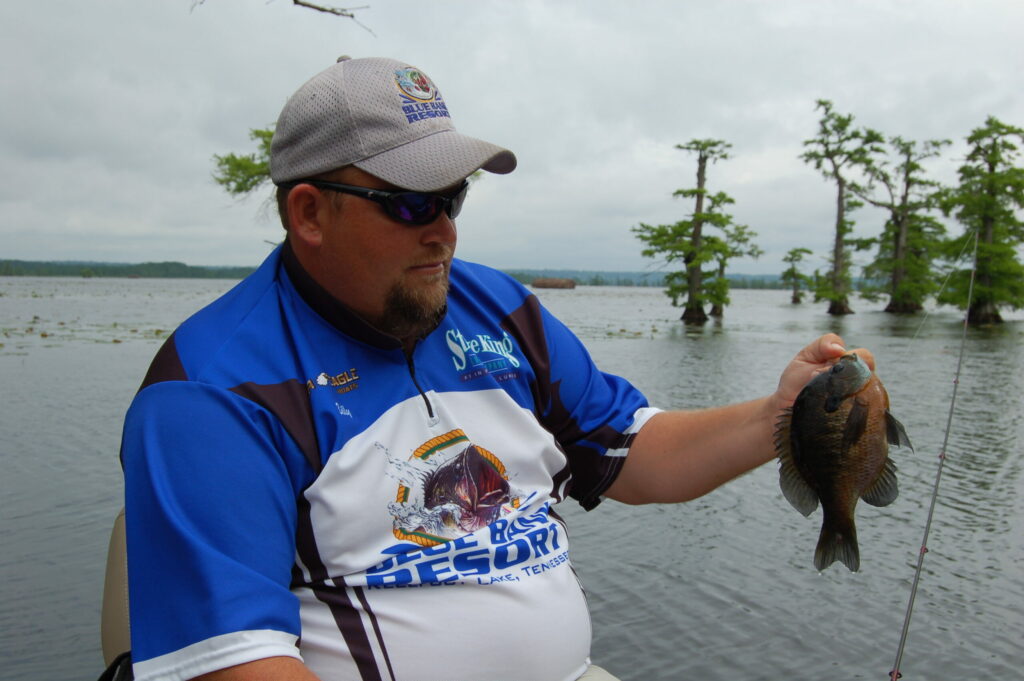Bluegill fishing is simple. That’s really why I love it so much. I’ve often said life is stressful, so fishing shouldn’t be. I’m glad there are bass tournaments and the anglers who fish them. Those guys and gals keep the industry humming along and generate huge amounts of funding for conservation. It’s just not for me. I’ll take a cane pole and crickets.
My bluegill roots are at Reelfoot Lake in Northwest Tennessee where my grandpa and his kin passed on to me the simple pleasure of dipping crickets for big bulls around tree trunks and lily pads. Hank Williams Jr. was on the radio, and the beer in the cooler was cold and coveted. Evening fish fries added significant motivation for a successful day on the water. No fish, no food.
During the bluegill spawn, which is happening now in much of the Midwest, anglers can experience fast action catching one after another of these feisty panfish. When they’re guarding a nest, they’ll hit just about anything you put in front of them. Red worms, nightcrawlers, beemoths and jigs are all highly productive offerings.
Surely nothing has caught more bluegill than worms. For me, though, I like crickets. I just love fishing with them. They’re harder to find because we’re losing so many of the great, old mom and pop bait shops, but you can often find them at pet stores. Even the chains, like Pet Smart or Petco often sell crickets for feeding pet amphibians.
All you need for this sort of fishing is a basic rod and reel. Push button reels, like the classic Zebco 33, or a spinning reel on a 6 foot long, light or medium-light action rod will suffice. But I like the modern cane pole approach, because you can pick up and set down your offering with tactical control. Get a 12 foot long pole and tie an equal footage of line to the tip. Rig on a slip bobber, a single split shot sinker and a hook. I like a size 6 with a long shank for crickets. Mustad actually makes a cricket hook.
You can fish the bluegill spawn from the shore, but having a boat or personal watercraft, like a kayak, is a better way to find fish. You can move around the water you’re fishing to find likely spots, which are often by vegetation or trees in the water. Nice solid bottoms are ideal spawning areas.
Electronics certainly can provide an advantage in bluegill fishing. Modern side-imaging technology allows anglers to locate spawning beds along the shoreline too deep for the naked eye. But bluegill fishing does not necessitate the need of having a fancy sonar system. Most beds can be spotted. Wearing polarized sun glasses helps, as done watching for bubbles on the surface. This sign of activity can help locate those deeper beds.
There really isn’t a type of fishing I enjoy more than catching a mess of bluegills in early June. It has a lot to do with the fast action of the angling, but it admittedly also has a lot to do with fish fries. Crispy bluegill filets given a squeeze of fresh lemon and dipped in tater sauce is about as good as it gets.
See you down the trail…
Brandon Butler
bbutler@driftwoodoutdoors.com
Pic: Catching bluegills in early June is a fun way to support a fish fry habit.
For more Driftwood Outdoors, check out the podcast HERE or anywhere podcasts are streamed.




